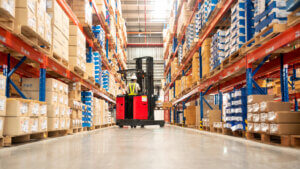By Jo Bradley, Business Development Manager at Sparck Technologies
Ecommerce fulfilment is prone to frequent and often dramatic spikes in demand, and this causes retailers significant challenges in the packing area. How can businesses smooth the curve and cope with these peaks when labour resources are so scarce?
Peak periods stress-test the whole fulfilment and delivery process and nowhere is this more acutely felt than in the packing area. Constructing boxes, packing, weighing, sealing and labelling manually is a slow process, and few shippers have either the space or the available labour to create additional packing stations for what may be only a few days’ work. And as everyone knows finding flexible labour, available at short notice, is a major headache. So, how can online retailers respond to these spikes in demand?
The case for greater use of automation in the packing area is compelling. However, simple size-constrained machines using only one-size of box does not cater for the wide variety of products and order sizes experienced by most online retailers. The results are often very wasteful.
Waste not…
It is understood that 60% of ecommerce deliveries are by volume at least a quarter composed of void-fill or just fresh air. The consequences are poor, with higher material wastage, greater chances of product damage and a negative impact on brand image – resulting in higher levels of returns.
What can be done?
High-speed fit-to-size ‘auto-boxing’ systems, developed by Sparck Technologies and used by major brands globally, are capable of tailor-making over 1,100 ecommerce packages per hour.
The system scans and measures the item or group of items to be packed and calculates the ‘best fit’ box shape and size. Material for the box and lid is cut and creased to size, erected around the item(s) and the lid glue-sealed – which is faster and more recyclable than using tape. Parcels are weighed, labelled and away.
This approach addresses the waste problem – cardboard usage typically cut by 30%, and a tight fit eliminates the need for void fill. Total package volumes can be reduced by 50%, maximising the use of the truck or trailer cube and reducing shipping costs and environmental impacts.
More cogently for the hard-pressed fulfilment centre manager, at packing rates in excess of 1,100 per hour the latest CVP Everest machine can potentially replace up to 20 manual packing stations. And for businesses with mid-market volumes a similar machine, the CVP Impack, produces up to 500 boxes per hour and offers just about all the benefits of the CVP Everest.
The business case is impressive. Even operating ‘off-peak’ at well below capacity there is a rapid ROI in the form of material savings, lower shipping costs and labour economies – labour that could be redeployed to other tasks, such as picking. But it is at peak times that the CVP Everest and CVP Impack systems really come into their own, ramping up throughput without any corresponding increase in labour, and minimising the burden on despatch and delivery operations.
By choosing an automated solution to ‘right-size’ ecommerce deliveries, retailers can meet their fulfilment promises, even in the busiest peaks, while respecting the environment, reducing transit damage, and saving money.
More information on Sparck Technologies’ CVP Automated Packaging Solutions can be found at https://sparcktechnologies.com






